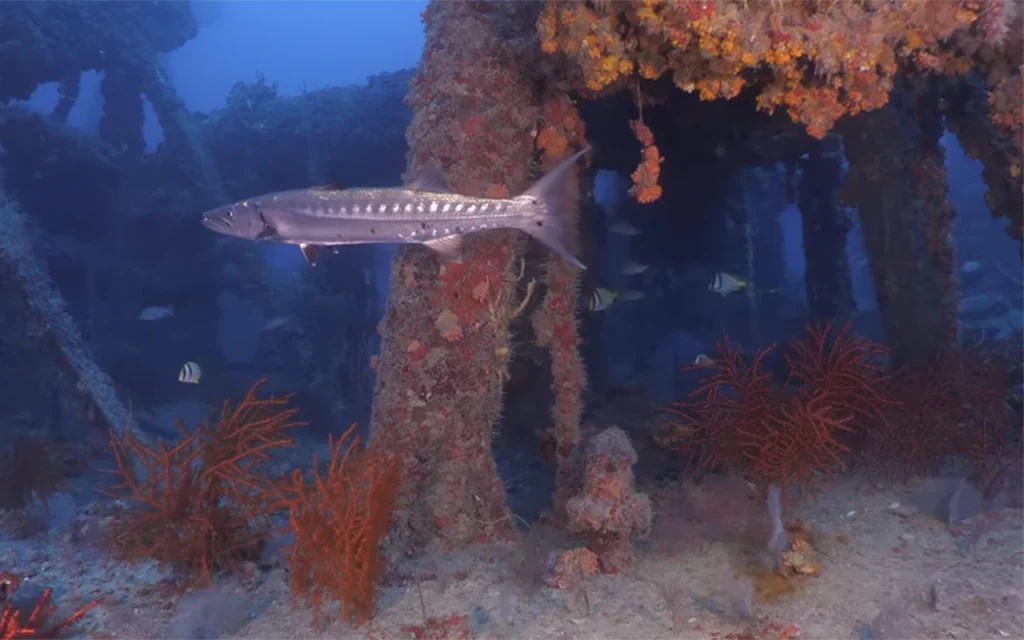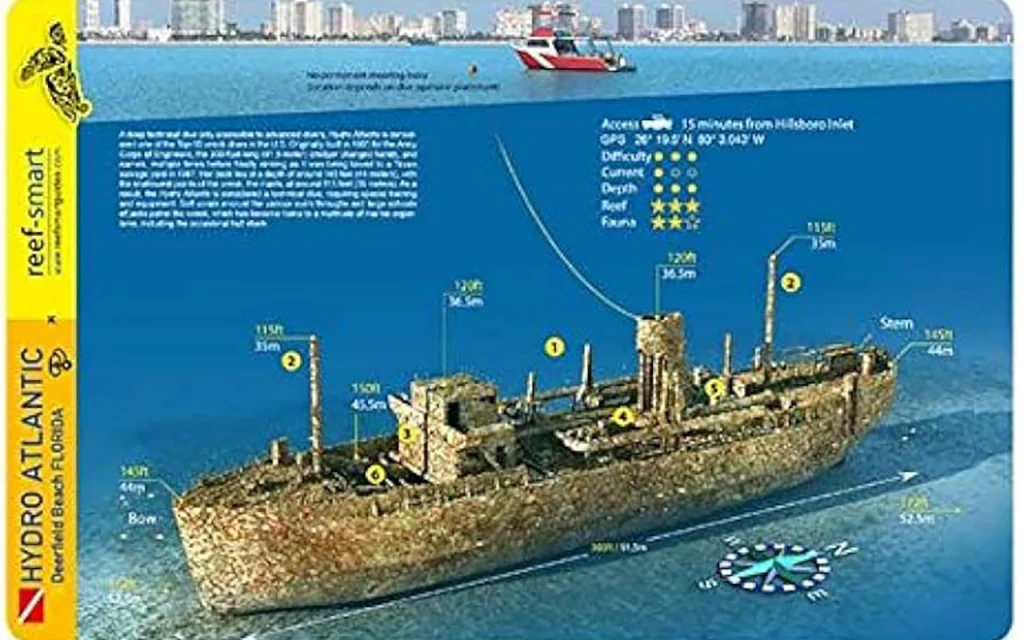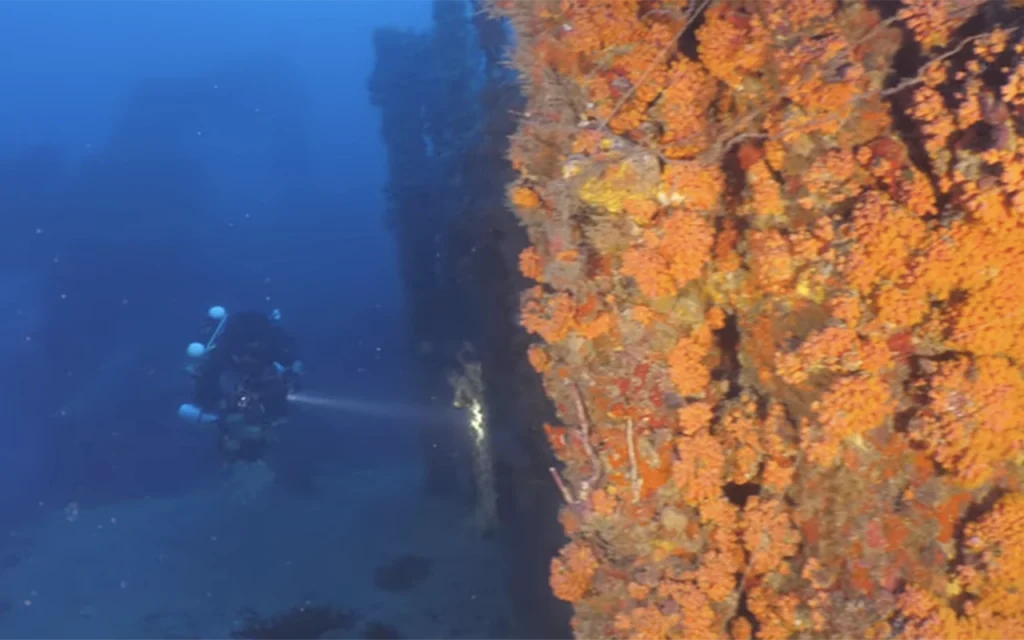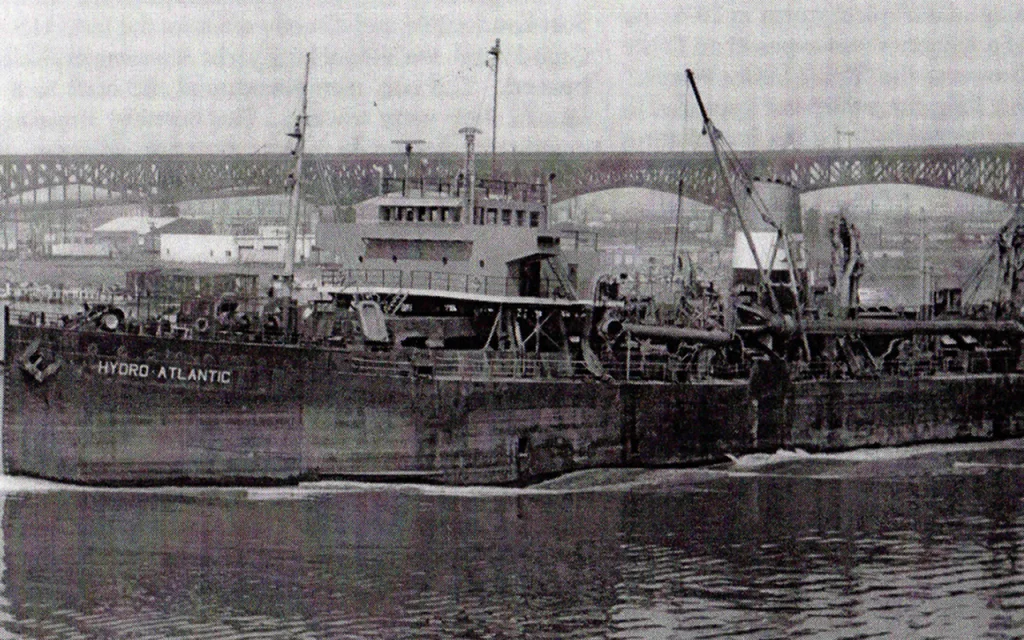Table of Contents

The Hydro Atlantic is considered one of the top wreck dives in Florida and the United States, offering a combination of depth, historical significance, and rich marine life that distinguishes it from other shipwrecks in the region.
Article at a Glance
- Historical Background: The Hydro Atlantic, originally built in 1905 as a hopper dredge, has a rich history, including multiple name changes and purposes before sinking in 1987.
- Location and Coordinates: The wreck is located approximately 1.3 miles southeast of Boca Inlet, Florida, with coordinates at 26° 19.50′ N, 80° 03.043′ W.
- Depth and Diving Conditions: The wreck rests at depths ranging from 135 to 175 feet, making it a technical dive site suitable for experienced divers due to strong currents and challenging conditions.
- Identifiable Features: Divers can explore original cranes, rigging, machinery, and the superstructure, providing insight into the ship’s operational history and engineering.
- Marine Life: The wreck is home to diverse marine life, including large schools of amberjack and occasional bull sharks, contributing to a vibrant underwater ecosystem.
- Safety Measures: Divers are required to have appropriate certifications and are encouraged to plan their dives carefully, with pre-dive briefings and navigation aids provided by dive operators.
- Dive Shops: Several dive shops, such as Force-E Scuba Centers and Trilogy Dive Center, offer trips to the Hydro Atlantic, catering to technical divers looking for a unique underwater experience.
Shipwreck Location Coordinates and Depth
Depth
It rests at a depth of 173 feet, with the deck lying at approximately 145-150 feet and one mast reaching up to 120 feet.
Location Coordinates
The coordinates for the Hydro Atlantic wreck are 26° 19.50′ N, 80° 03.043′ W.

What Do Scuba Divers Say About This Ship
- Diving Conditions: Divers report that the conditions at the Hydro Atlantic can be challenging, with a depth range of 135 to 173 feet, making it suitable for technical diving. The site often experiences strong currents, which add to the dive’s complexity.
- Marine Life: The wreck is known for its abundant marine life, including large amberjacks and other pelagic fish. Divers occasionally spot bull sharks in the distance, adding an element of excitement to the dive.
- Diving Experience: The Hydro Atlantic is considered one of the top ten wreck dives in the USA. It offers a unique experience due to its historical significance and the opportunity to explore a well-preserved wreck. However, it is recommended for advanced and technical divers to fully appreciate the site, as it allows for longer bottom times and a more comprehensive exploration.
- Visibility and Temperature: Divers have noted that the visibility can be around 60 feet, with water temperatures at the bottom around 79 degrees Fahrenheit.
What Kind of Marine Life Can Be Found on The Ship
The Hydro Atlantic shipwreck is home to a diverse array of marine life. Divers frequently encounter large schools of amberjack and other pelagic fish around the wreck. Additionally, the site is occasionally visited by bull sharks, adding to the excitement of the dive.
The wreck itself is encrusted with soft corals, providing a vibrant underwater environment that attracts various species and makes it a popular site for advanced and technical divers.
Key Information
| Key Information | Details |
|---|---|
| Location | Pompano Beach, Florida |
| Coordinates | 26° 19.50′ N, 80° 03.043′ W |
| Depth | 135 to 175 feet |
| Type of Dive | Technical dive, suitable for experienced divers |
| Historical Significance | Originally built in 1905; used as a dredger; sank in 1987 |
| Marine Life | Home to large schools of amberjack, bull sharks, and vibrant corals |
| Notable Features | Intact cranes, rigging, and superstructure for exploration |
| Access | Accessible by boat; dive shops offer guided trips |
| Safety Recommendations | Requires technical diving certification; strong currents present |
What Makes The Hydro Atlantic a Unique Diving Experience
- Historical Significance: Originally built in 1905 for the U.S. Army Corps of Engineers, the ship has a rich history, having undergone several name changes and purposes before sinking in 1987. This historical context adds depth to the diving experience.
- Technical Dive: The wreck is considered one of the ten most beautiful wreck dives in the United States and is recommended as a technical dive due to its depth, ranging from 135 to 173 feet. This makes it suitable for experienced divers seeking a challenging and rewarding dive.
- Marine Life and Coral Growth: The wreck is encrusted with colorful soft corals and attracts a wide variety of marine life, including large schools of amberjack and occasional bull sharks. The vibrant ecosystem around the wreck enhances the visual appeal of the dive.
- Structural Features: The Hydro Atlantic is a large sea-going dredger, 300 feet long and 64 feet wide, with original cranes and rigging still intact. The wreck offers numerous swim-throughs and opportunities to explore its structure, making it an engaging site for divers.
- Accessibility: While the wreck is accessible by boat and offers free access, it is located in an area frequented by pleasure boats, adding an element of caution for divers. The site is known for medium to strong currents, which can vary, adding to the challenge and excitement of the dive.
How Does The Hydro Atlantic Compare to Other Shipwrecks in Florida
- Depth and Technical Challenge: The Hydro Atlantic is a deep wreck, resting at depths between 135 to 175 feet, making it suitable for technical divers. This depth is greater than many other popular wrecks in Florida, which often lie in shallower waters, making the Hydro Atlantic a more challenging dive.
- Historical and Structural Integrity: Built in 1905, the Hydro Atlantic has a rich history and remains largely intact, with original cranes and rigging still present. This level of preservation, combined with its historical significance, adds to its allure compared to other wrecks that might be more fragmented or less historically notable.
- Marine Life and Coral Growth: The wreck is encrusted with colorful corals and sponges, attracting a diverse array of marine life, including schools of amberjack and occasional bull sharks. This vibrant ecosystem is comparable to other Florida wrecks but is enhanced by the wreck’s depth and the nutrient-rich waters of the Gulf Stream.
- Opportunities for Exploration: The Hydro Atlantic offers numerous swim-throughs and opportunities for penetration, appealing to divers interested in exploring the interior of wrecks. This feature is particularly attractive for advanced divers seeking a more immersive wreck diving experience.

What is The Full History of This Ship
Construction and Early Years
- 1905: The ship was launched at Yard 51 of the Sparrows Point, Maryland, facility of the Maryland Steel Company. It was originally built as a hopper dredge for the U.S. Army Corps of Engineers and was named the Delaware. The ship was designed to dredge materials from waterways, with a draft allowing it to operate at a maximum depth of 45 feet.
Mid-20th Century Changes
- 1922: The Delaware dredged 1,366 loads for the Philadelphia District, removing over 2.3 million cubic yards of material.
- 1950: The ship was sold to Construction Aggregates Corporation and renamed Sand Captain.
- 1961: It underwent a significant rebuild that increased its hopper capacity from 3,076 to approximately 5,000 cubic yards and likely involved reconstructing its superstructure. The ship was renamed Ezra Sensibar and worked on projects such as the Chesapeake Bay Bridge Tunnel.
- 1962: An engine fire led to repairs in New York.
Final Years and Sinking
- 1968: The ship was sold to Hydromar Corporation of Delaware and renamed Hydro Atlantic.
- 1987: On December 7, while being towed to a salvage yard in Brownsville, Texas, the Hydro Atlantic sank. The towing operation failed to maintain the pumps needed to keep the aging vessel afloat, and it sank approximately one mile east of the Boca Raton Inlet. The hull gave way during a tropical storm, and the tugboat crew released the towlines as the ship slipped beneath the waves.

What Historical Features Can Still Be Identified on The Hydro Atlantic Wreck
- Original Cranes and Rigging: The ship’s original cranes and rigging are still present, providing a glimpse into its past as a dredger. These structures are significant as they highlight the ship’s operational history and purpose.
- Superstructure and Deck: The bridge and superstructure remain largely intact, offering multiple levels for exploration. The deck is encountered at approximately 145 feet, with the forward mast reaching up to 100 feet from the surface.
- Machinery and Equipment: The wreck still contains winches, pipes, and other machinery that were part of its dredging operations. These elements are encrusted with corals and sponges, adding to the visual appeal while preserving historical aspects of the ship.
- Interior Features: Inside the wreck, divers can find engine room skylights, a large panel of gauges and controls, and the boiler room. These features provide insight into the ship’s engineering and operational capabilities.
- Structural Integrity: Despite some walls of the superstructure having collapsed, the hull remains largely intact, allowing divers to explore inner passages and understand the ship’s layout.
What Safety Measures Are in Place for Divers Visiting the Hydro Atlantic
- Skill Level Requirement: The Hydro Atlantic is a technical dive site, recommended for experienced wreck and technical divers due to its depth range of 135 to 175 feet. Divers are often required to have certifications in decompression procedures or greater.
- Dive Planning: Divers are encouraged to plan their dives carefully, including considering the strong currents that can be present at the site. Technical divers can spend 25-30 minutes on the wreck with a 60-75 minute runtime, allowing for safe exploration.
- Boat Dive Access: The site is accessible by boat, and divers typically use charter services to reach the wreck. This ensures that divers are accompanied by experienced operators who are familiar with the conditions and safety protocols.
- Equipment and Briefing: Divers are advised to carry appropriate equipment for deep and technical dives, including redundant air supplies and dive computers. Pre-dive briefings by charter operators often include safety information and recommended routes.
- Navigation Aids: Waterproof cards with 3D images and key information about the wreck are available to help divers navigate the site safely and identify important features.
Dive Shops That Prove Diving Trips to This Shipwreck
- Force-E Scuba Centers: They offer trips to the Hydro Atlantic wreck, which is considered one of the best technical wreck dives in Florida. The trip costs approximately $139.99.
- Trilogy Dive Center: This dive shop offers single-day technical dive trips to the Hydro Atlantic. Divers are required to have Decompression Procedures or greater certification. The trip includes round-trip transportation from the Trilogy Dive Center to the dive site.





